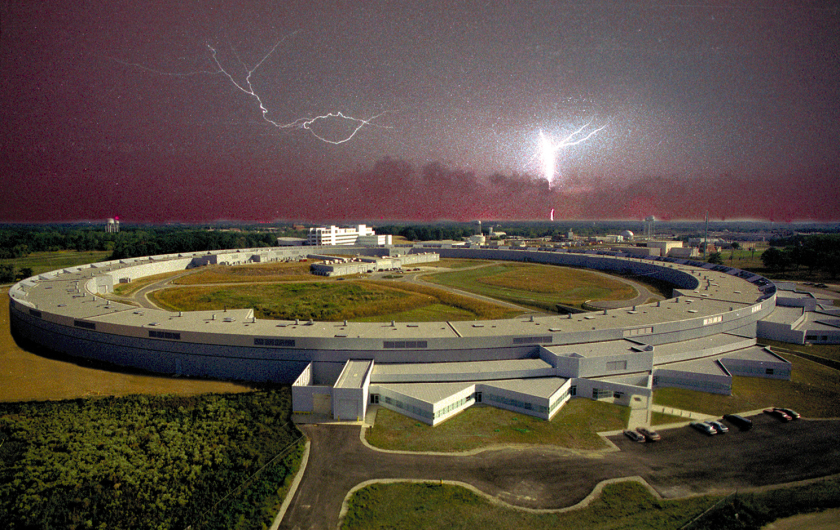D-Lecture: A Light and a Beam

The Advanced Photon Source facility illuminated by lightning. ( © Argonne National Laboratory

Alexander Zholents is the Director of the Accelerator Systems Division at Argonne National Laboratory.
Dr. Alexander Zholents from Argonne National Laboratory will present on 18th December 2014 his thoughts on "A Light and a Beam: a Theme with Variations". The presentation will be given at the lecture hall of the Wilhem-Conrad-Röntgen-Campus of HZB at 2 pm. After the presentation, we invite you to “Glühwein” and informal discussion.
What: D-Lecture
When: 14:00, 18. december 2014
Where: BESSYII, Lecture Hall
In his Distinguished Lecture, Aexander Zholents will discuss various techniques for making better beams of charged particles and beams better matched to applications. His examples will include the optical stochastic cooling, formation of the electron bunches for free-electron lasers, generation of x-rays pulses suitable for four-wave mixing experiments, laser-assisted electron beam conditioning for free-electron lasers, beam conditioning in storage rings for generation of picosecond x-ray pulses and more. Alexander Zholents is the Director of the Accelerator Systems Division at Argonne National Laboratory. His research interests are focused on design, construction, commissioning and operations of synchrotron radiation sources and x-ray free-electron lasers.
We are happy to inform you that we will provide you with a shuttle from Wannsee to Adlershof and return. If you like to use this shuttle for one-way, return or both, then please send an e-mail to jennifer.bierbaum@helmholtz-berlin.de. The shuttle from Wannsee will leave at 1 pm and return at 4 pm (sharp).
red.
-
A new way to control the magnetic properties of rare earth elements
The special properties of rare earth magnetic materials are due to the electrons in the 4f shell. Until now, the magnetic properties of 4f electrons were considered almost impossible to control. Now, a team from HZB, Freie Universität Berlin and other institutions has shown for the first time that laser pulses can influence 4f electrons- and thus change their magnetic properties. The discovery, which was made through experiments at EuXFEL and FLASH, opens up a new way to data storage with rare earth elements.
-
HZB magazine lichtblick - the new issue is out!
In his search for the perfect catalyst, HZB researcher Robert Seidel is now getting a tailwind – thanks to a ERC Consolidator Grant. In the cover story, we explain why the X-ray source BESSY II plays an important role for his research.
-
BESSY II shows how solid-state batteries degrade
Solid-state batteries have several advantages: they can store more energy and are safer than batteries with liquid electrolytes. However, they do not last as long and their capacity decreases with each charge cycle. But it doesn't have to stay that way: Researchers are already on the trail of the causes. In the journal ACS Energy Letters, a team from HZB and Justus-Liebig-Universität, Giessen, presents a new method for precisely monitoring electrochemical reactions during the operation of a solid-state battery using photoelectron spectroscopy at BESSY II. The results help to improve battery materials and design.
